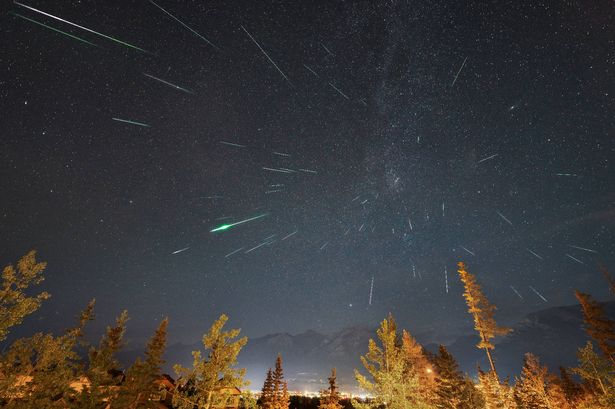
The Perseid meteor shower, one of the most spectacular events in the astronomical calendar, is set to take place until August 24
This week marks your final opportunity to witness the Perseid meteor shower, with blazing fireballs set to illuminate UK skies. The Royal Observatory has confirmed that the meteor display, which commenced on July 17, will persist until August 24.
The intensity of such spectacles increased last week and reportedly reached its peak on August 12. However, breathtaking views remain potentially achievable until Sunday, with NASA branding it the ‘most popular meteor shower of the year’.
This sentiment was also shared by Dr Shyam Balaji, theoretical physicist at King’s College London, who described it as an ‘astronomical highlight’ for numerous stargazers. He said: “The Perseid meteor shower is caused by the Earth travelling through the debris left by a comet called Swift-Tuttle.
“The debris falls through the Earth’s atmosphere and as it burns up you get the meteor shower display. It is one the fastest and brightest meteor showers of the year, so an astronomical highlight for stargazers.”
According to Bristol Live, astronomy enthusiasts stand the best chance of spotting the Perseid meteor shower by gazing upwards and towards the North East, in the direction of the Perseus constellation. This constellation, named after the Greek mythological hero, might appear to some as the rough silhouette of a man’s form.
However, your ability to spot both the constellation and the Perseid meteors will likely hinge on the Moon’s luminosity. Experts at Starwalk indicate the Moon will be at 26.9% brightness today.
Dr Balaji continued: “The best place to view the Perseid meteor shower is in the North East near the constellation Perseus. While you can look at the whole sky and are likely to see a meteor, that’s the target location in order to get the best viewing experience.”
He later added: “For me personally, I the best way to view the meteor shower is just with your naked eye because of the speed with which they move.
“But you could use Sky Guide or Stellarium or other stargazing apps to get a better viewing experience, to target the right regions of the sky to see the meteor shower.”
The Perseid meteor shower has been observed for almost 2,000 years. It happens when Earth travels through a debris trail left by Comet Swift-Tuttle.
The meteors themselves are astonishingly small – no larger than a grain of sand – and incinerate as they penetrate Earth’s atmosphere. Hurtling at approximately 36 miles per second, these microscopic fragments create dazzling streaks of light across the sky.
Drawing their name from the Perseus constellation – believed to be their point of origin – the Perseids are renowned for their breathtaking fireballs. These are distinguished by enormous flashes of light and colour that linger in the heavens for extended periods compared to ordinary meteor streaks.
Stargazing advice from the Royal Museums Greenwich adds: “Plan ahead and check the weather forecast. If it is likely to be inclement, find a different location or go out on a different day. The days leading up to the peak are usually better than the days after.
“Reduce the amount of light pollution in your field of view. This could mean heading out to the countryside, a nearby park or even turning your back to street lamps if you’re not able to go anywhere.”
What do you think? Let us know in the comment section below.

